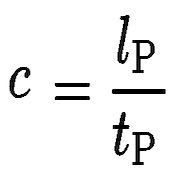
Donna Strickland, University of Waterloo, Waterloo, Ontario Canada
Articles (there are 106 cited within Google Scholar)
Homepage(s): Google Scholar, inSPIRE, Twitter, Wikipedia
2018 Nobel Prize: Using chirped pulse amplification allowed smaller high-power laser systems to be built on a typical laboratory optical table, as “table-top terawatt lasers”.[12]
YouTube: Multi-frequency Raman Generation for Intense Ultrashort Pulses
Most recent email: Tuesday, May 23, 6:03 PM
Dear Prof. Dr. Donna Strickland:
My prior correspondence and references to your work are here: https://81018.com/strickland/. My first note to Gérard Mourou is here: https://81018.com/mourou/
Ostensibly, we had mapped the universe in 202 base-2 notations from PlanckTime to now. Just recently we mapped it all according to the 26 faces of time: https://81018.com/the-firsts/
In light of Loop Quantum Gravity’s insistence that all time in now, it has some interesting possibilities.
Thank you.
Warmly,
Bruce
First email: Thursday, 14 August 2019 at 14:08
Dear Prof. Dr. Donna Strickland:
Thank you for all your very brilliant work. A “table-top terawatt laser” seems like an oxymoron. How is it that light works that way? I am sure you have given it some deep thought and had some fun doing it!

So, who better to ask the question, “What is light?” Of course, we know about visible light, but what about the rest of the electromagnetic spectrum? Is it also light? We know there is a known charge and mass at each point along that spectrum. Doesn’t the most-famous and formidable Einstein equation give us a clear sense of that? Yet, there is also Max Planck’s rather forgotten equation that might be telling us something equally important about the nature of light. His simple ratio has not received much attention over the years.
Perhaps it should.
What happens when we attempt to resolve these two equivalences? Can we? Thank you.
Most sincerely,
Bruce
*****************
Bruce E. Camber
http://81018.com
PS. Perhaps you might appreciate a little background. I rather unwittingly got into this unusual area of questioning when in 2011 in a high school geometry class, we proceeded to ask the Zeno-like question as we divided the edges of a tetrahedron in half, connected the new vertices, and found the four smaller tetrahedrons in each corner and the octahedron in the middle. We continued by dividing the edges of all the new objects, over and over until we reached the size of things within particle physics. Then, in a somewhat arbitrary manner, we decided that there would be consolidation of objects as the scale got ever so much smaller. Eventually we discounted the possibility of a singular primordial atom as Lemaître proposed. Instead, we engaged the concepts of John Wheeler but considered his quantum foam to be more appropriately named Planck spheres. We actually calculated the numbers within the progression of spheres! Of course, we had to learn a little about dimensional analysis and we have a ways to go to be confident about anything! Then we had to learn about inflation, natural inflation, and period doubling, but that work wasn’t basic enough. Only by going back to Kepler and the progressive studies of cubic close packing did we feel that there was a possibility of understanding light and time and infinity in new ways. https://81018.com/chart/
We know how dangerously close we are to nonsense. And, we know that idiosyncratic often borders on idiocy! So, of course, we want the help of our best thinkers and hopefully you all can help steer us in the right direction! Thanks again. -BEC
A few of our working references beyond those cited above:
- Electromagnetic radiation
- Mass–energy equivalence
- The Electromagnetic Spectrum, Bill Blair
- “The 2018 Nobel Prize in Physics: A gripping and extremely exciting tale of light” (PDF), CURRENT SCIENCE, VOL. 115, NO. 10, 25 NOVEMBER 2018, G. Ravindra Kumar, Tata Institute of Fundamental Research, Homi Bhabha Road, Colaba, Mumbai 400 005, India
- Interdisciplinarity: A Nobel Opportunity, Michael Szell, Yifang Ma, Roberta Sinatra, Nov. 2018
- M0 = E0c2